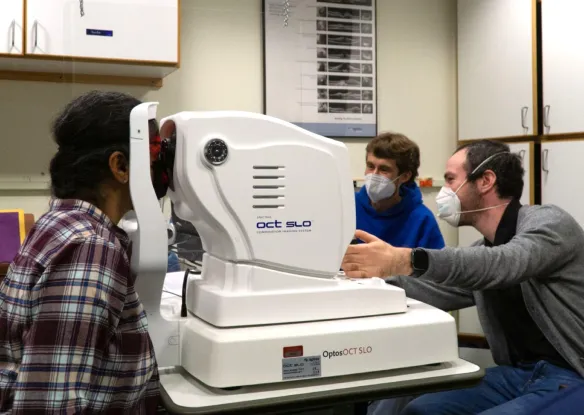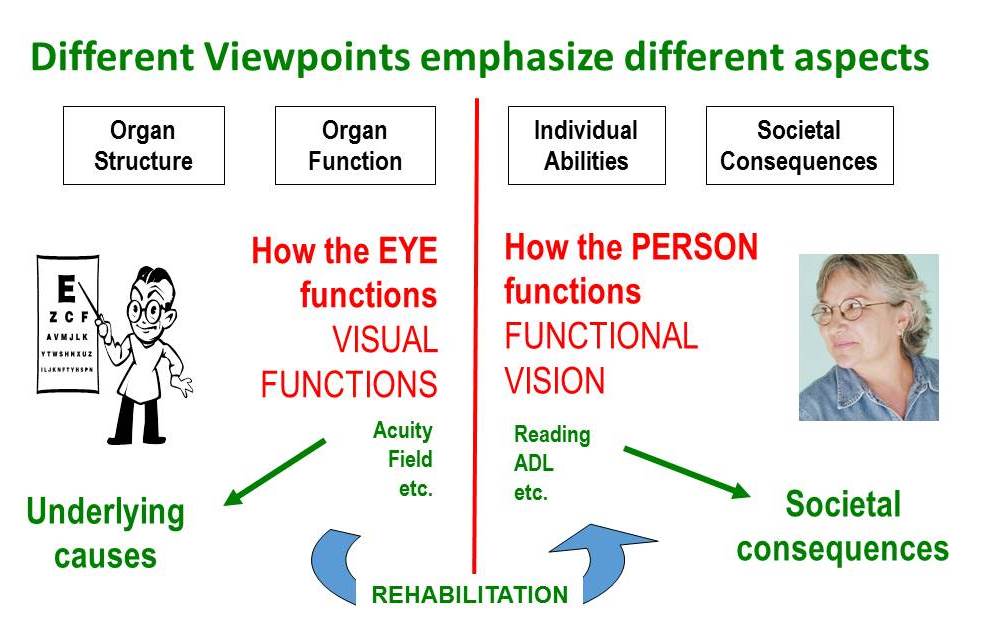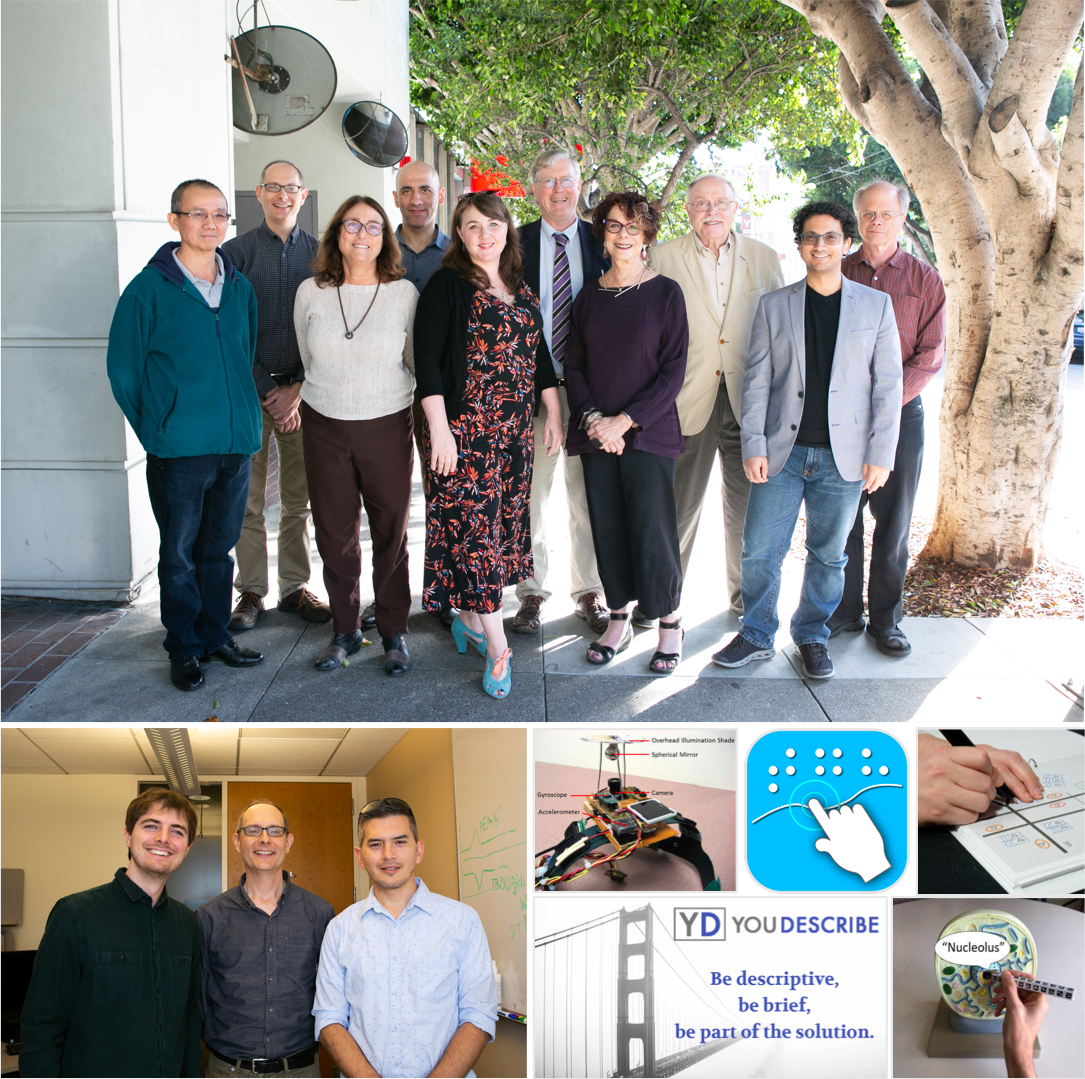To explore vision-related functioning as it relates to Vision Rehabilitation. This involves the development of = insights into vision-related functioning and complex vision-related behaviors, as well as = the development of clinically useful assessment tools, both low-tech and high-tech.

For eye doctors measuring contrast sensitivity loss during routine eye exams is not a priority, since contrast losses are not disease specific and do not guide treatment decisions.
For the patient, on the other hand, knowledge about contrast losses, of which they are usually not consciously aware, is very important, since it may affect the performance of Activities of Daily Living and affect safety in mobility tasks.
When visual parameters are measured, the measurements are usually limited to determining peak contrast sensitivity and threshold visual acuity as separate, seamingly independent, measurements. Peak contrast sensitivity and high contrast acuity (the endpoints of the contrast sensitivity curve), however, do not reflect the conditions encountered in common ADL environments. For ADL tasks visual acuity and contrast sensitivity interact.
Dr. Colenbrander developed the Mixed Contrast format to assess this interaction by measuring the slope of the curve, in the ADL area. High contrast (HC) and low contrast (LC) targets, presented side-by-side on a single card, allow the assessment of the HC-LC difference which is relevant for ADL performance.
Mixed Contrast cards PDF
Labs
Centers
Rehabilitation Engineering Research Center
The Center’s research goal is to develop and apply new scientific knowledge and practical, cost-effective devices to better understand and address the real-world problems of blind, visually impaired, and deaf-blind consumers. The RERC has many ongoing R&D projects and collaborative
Get Involved
If you are interested in vision science or want to learn more about low vision and blindness, there are many opportunities to get involved at The Smith-Kettlewell Eye Research Institute.


